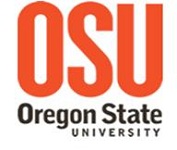- Dr. Stacey Harper received a five-year, $3.3 million award from the National Science Foundation to study the risks of micro- and nanoplastics to aquatic organisms in the pacific northwest.
- Dr. Stacey Harper received a five-year, $1.9 million award as an Outstanding New Environmental Scientist (ONES) from the National Institute of Environmental Health Sciences (NIEHS) and was selected as 2013 recipient of the L.L. Stewart Faculty Scholars Award which recognizes an outstanding faculty members at Oregon State University.
You are here
Can an InChI for Nano Address the Need for a Simplified Representation of Complex Nanomaterials across Experimental and Nanoinformatics Studies?
| Title | Can an InChI for Nano Address the Need for a Simplified Representation of Complex Nanomaterials across Experimental and Nanoinformatics Studies? |
| Publication Type | Journal Article |
| Year of Publication | 2020 |
| Authors | Lynch I, Afantitis A, Exner T, Himly M, Lobaskin V, Doganis P, Maier D, Sanabria N, Papadiamantis AG, Rybinska-Fryca A, Gromelski M, Puzyn T, Willighagen E, Johnston BD, Gulumian M, Matzke M, Etxabe AGreen, Bossa N, Serra A, Liampa I, Harper S, Tämm K, Jensen ACØ, Kohonen P, Slater L, Tsoumanis A, Greco D, Winkler DA, Sarimveis H, Melagraki G |
| Journal | Nanomaterials (Basel) |
| Volume | 10 |
| Issue | 12 |
| Date Published | 2020 Dec 11 |
| ISSN | 2079-4991 |
| Abstract | Chemoinformatics has developed efficient ways of representing chemical structures for small molecules as simple text strings, simplified molecular-input line-entry system (SMILES) and the IUPAC International Chemical Identifier (InChI), which are machine-readable. In particular, InChIs have been extended to encode formalized representations of mixtures and reactions, and work is ongoing to represent polymers and other macromolecules in this way. The next frontier is encoding the multi-component structures of nanomaterials (NMs) in a machine-readable format to enable linking of datasets for nanoinformatics and regulatory applications. A workshop organized by the H2020 research infrastructure NanoCommons and the nanoinformatics project NanoSolveIT analyzed issues involved in developing an InChI for NMs (). The layers needed to capture NM structures include but are not limited to: core composition (possibly multi-layered); surface topography; surface coatings or functionalization; doping with other chemicals; and representation of impurities. NM distributions (size, shape, composition, surface properties, etc.), types of chemical linkages connecting surface functionalization and coating molecules to the core, and various crystallographic forms exhibited by NMs also need to be considered. Six case studies were conducted to elucidate requirements for unambiguous description of NMs. The suggested layers are intended to stimulate further analysis that will lead to the first version of a "nano" extension to the InChI standard. |
| DOI | 10.3390/nano10122493 |
| Alternate Journal | Nanomaterials (Basel) |
| PubMed ID | 33322568 |
| PubMed Central ID | PMC7764592 |
| Grant List | 731032 (NanoCommons) / / Horizon 2020 Framework Programme / 814572 (NanoAolveIT) / / Horizon 2020 Framework Programme / |
Theme by Danetsoft and Danang Probo Sayekti inspired by Maksimer
